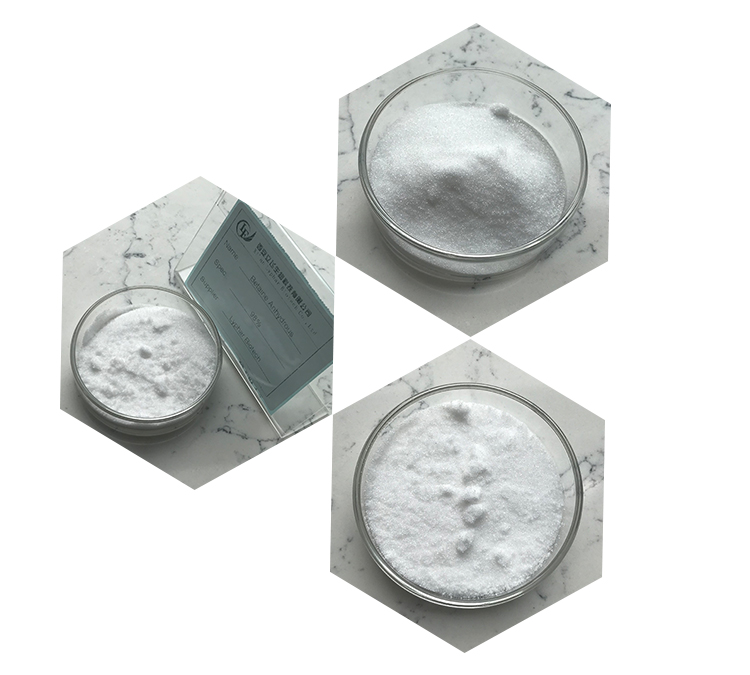Betaine is an organic compound derived from the amino acid glycine, also known as trimethylglycine (TMG). It plays an important role in various biological processes, including acting as an osmolyte and a methyl donor in the methionine-homocysteine cycle. Below are the properties and stability aspects of betaine:
Chemical Properties of Betaine
- Chemical Formula: C₅H₁₁NO₂
- Molecular Weight: 117.15 g/mol
- Structure: Betaine is a quaternary ammonium compound with a positively charged nitrogen atom (N⁺) and a carboxyl group (COO⁻).
Physical Properties of Betaine
- Appearance: It is typically a white crystalline or granular powder.
- Solubility: Betaine is highly soluble in water and alcohols. It has hygroscopic properties, meaning it can absorb moisture from the air.
- Melting Point: Betaine has a melting point around 301–305°C.
- pH: In solution, betaine is relatively neutral due to the presence of both a positive and negative charge, acting as a zwitterion.

Stability of Betaine
- Thermal Stability:
- Betaine is relatively stable at high temperatures, which makes it suitable for use in industrial processes where heating is involved.
- However, thermal decomposition may occur at extreme temperatures beyond 300°C, which could break down the quaternary ammonium structure.
2. pH Stability:
- Betaine remains stable in a wide range of pH values, particularly in neutral to slightly alkaline environments.
- Under strongly acidic or basic conditions, betaine may undergo decomposition or degradation.
3. Chemical Stability:
- Betaine is chemically stable under normal conditions, though it can be sensitive to oxidation under certain environmental factors.
- It is non-volatile, so it remains in solution without significant loss through evaporation.
4. Oxidative Stability:
- Betaine is relatively resistant to oxidation, though exposure to strong oxidizing agents may degrade it.
5. Storage Stability:
- Because of its hygroscopic nature, betaine should be stored in airtight containers to prevent moisture absorption, which could lead to clumping or dissolution of the powder form.
- It should be kept in cool, dry places to avoid hydrolysis or unwanted reactions that might occur in moist environments.

Biological Properties of Betaine
- Osmoprotectant: Betaine acts as an osmolyte, helping cells maintain their structure and function under stress conditions like dehydration or high salt concentrations.
- Methyl Donor: In the body, betaine is a crucial methyl donor, contributing to the conversion of homocysteine to methionine. This helps in reducing elevated levels of homocysteine, which is a risk factor for cardiovascular diseases.
Applications of Betaine
- Cosmetics: Used as a moisturizing agent and skin protectant in skincare formulations.
- Food Industry: Added to foods and animal feeds to improve water retention and boost the nutritional profile.
- Pharmaceuticals: Used in supplements to lower homocysteine levels and support liver function.
In summary, betaine is a stable and versatile compound with broad applications, especially due to its thermal, chemical, and pH stability under normal conditions.
